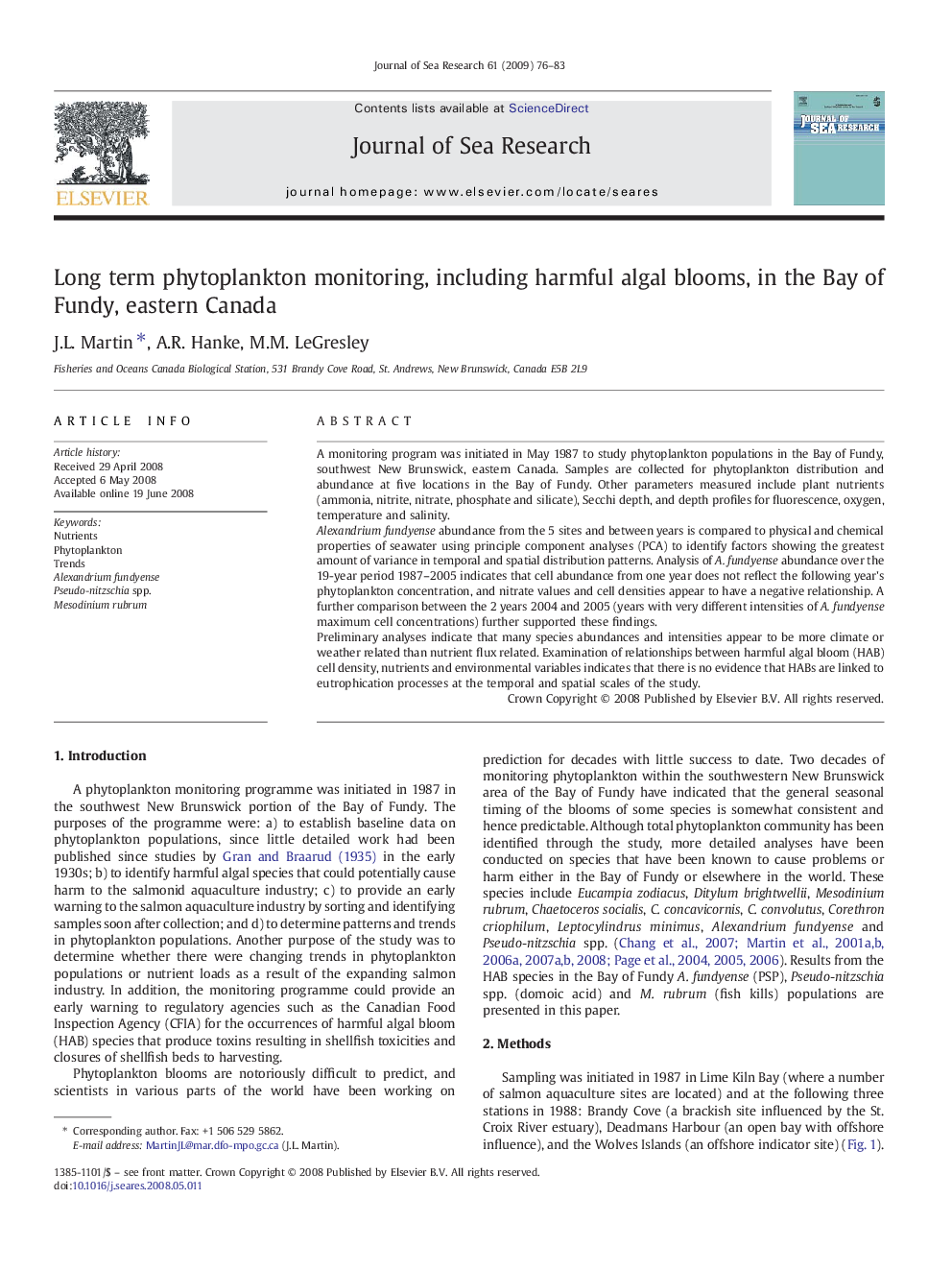| Article ID | Journal | Published Year | Pages | File Type |
|---|---|---|---|---|
| 4550244 | Journal of Sea Research | 2009 | 8 Pages |
A monitoring program was initiated in May 1987 to study phytoplankton populations in the Bay of Fundy, southwest New Brunswick, eastern Canada. Samples are collected for phytoplankton distribution and abundance at five locations in the Bay of Fundy. Other parameters measured include plant nutrients (ammonia, nitrite, nitrate, phosphate and silicate), Secchi depth, and depth profiles for fluorescence, oxygen, temperature and salinity.Alexandrium fundyense abundance from the 5 sites and between years is compared to physical and chemical properties of seawater using principle component analyses (PCA) to identify factors showing the greatest amount of variance in temporal and spatial distribution patterns. Analysis of A. fundyense abundance over the 19-year period 1987–2005 indicates that cell abundance from one year does not reflect the following year's phytoplankton concentration, and nitrate values and cell densities appear to have a negative relationship. A further comparison between the 2 years 2004 and 2005 (years with very different intensities of A. fundyense maximum cell concentrations) further supported these findings.Preliminary analyses indicate that many species abundances and intensities appear to be more climate or weather related than nutrient flux related. Examination of relationships between harmful algal bloom (HAB) cell density, nutrients and environmental variables indicates that there is no evidence that HABs are linked to eutrophication processes at the temporal and spatial scales of the study.
